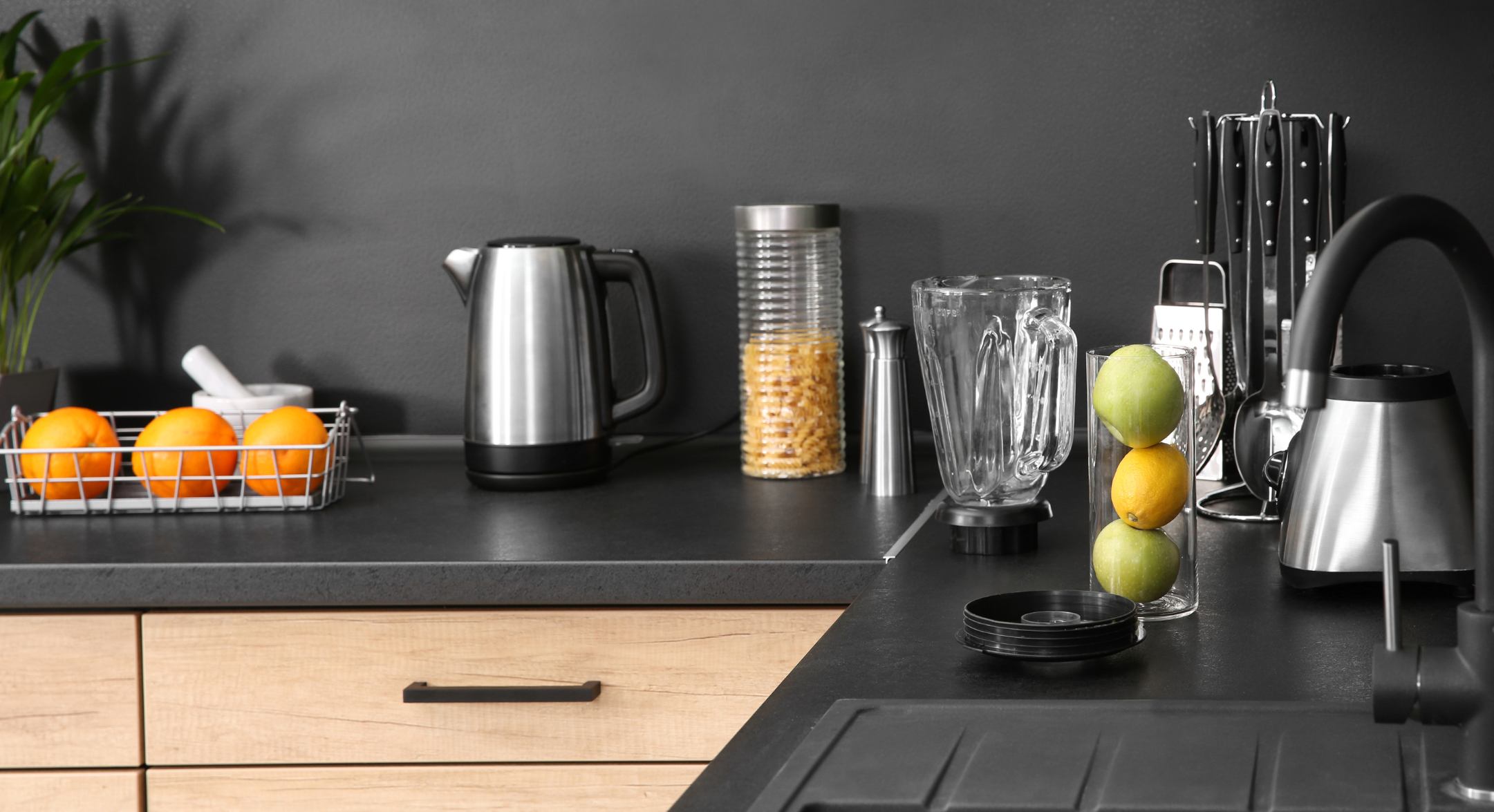Every year, the world of interior design trends evolves in surprising ways. In 2025, decoration will focus mainly on sustainability, comfort and technological integration. So, if you are thinking about renovating your home, this article presents the main trends of the year, as well as practical tips for transforming your home with modernity and style. So, check out the guidelines below and find out how to create unique environments!
1. Nature-Inspired Color Palettes
The choice of colors decisively influences the atmosphere of a room. Furthermore, in 2025, natural tones will dominate decoration. In this way, they promote feelings of comfort, calm and sophistication. Below, we will address the topic in four parts, as this makes it easier to understand and apply the tips in practice.
1.1 Earthy and Neutral Colors
First of all, colors such as terracotta, beige, brown and caramel are widely used. Therefore, these tones create welcoming and elegant spaces. In addition, they refer to the solidity of the earth, as they convey a sense of stability and comfort. In this way, environments painted with these colors become true serene refuges.
1.2 Greens and Blues
On the other hand, shades of green, such as moss green and olive, stand out for bringing freshness to the environment. Thus, these tones also help to connect the home with nature. Similarly, deep blue appears as an excellent option to convey serenity and sophistication. Therefore, use this color in decorative details or upholstery to create striking contrasting points.
1.3 Creative Combinations
Furthermore, the trend for 2025 is to bet on unusual combinations. In other words, mixing neutral tones with vibrant details, such as burnt yellow, wine or coral, can create dynamic and energetic environments. In this way, each space reflects the personality of its residents and, consequently, becomes unique.
1.4 Organic Finishes and Prints
In addition, the use of wallpapers with prints inspired by nature has gained prominence. For example, these coverings transform simple walls into true works of art. Thus, they tell stories and awaken emotions, integrating the environment with the natural environment in a surprising way. In short, color palettes help create a harmonious and sophisticated atmosphere.

2. Minimalism with a Cozy Touch
Minimalism has always been a strong trend, but in 2025 it evolves and transforms. Therefore, it now combines simplicity and comfort to create functional and cozy environments. To make it easier to read, we have divided this topic into three parts, as this improves understanding.
2.1 Natural Materials and Soft Textures
Initially, the use of natural materials, such as wood and stone, is essential for a minimalist design with a cozy touch. In addition, medium or dark wood tones add warmth and sophistication to environments. Likewise, natural stones add texture and solidity. Therefore, fabrics such as linen, cotton and even velvet, when used sparingly, transform the environment with a feeling of softness and comfort.
2.2 Lighting and Atmosphere
Next, lighting plays a crucial role in creating pleasant atmospheres. Therefore, invest in soft and warm lights, as they contribute to a welcoming environment. For example, lamps with mild tones and lamps with organic designs help to create varied atmospheres according to the need. Therefore, natural light should be used whenever possible, which, consequently, enhances every detail of the environment.
2.3 Integration and Personalization
Finally, current minimalism values “less is more” with meaning. Therefore, instead of filling the space with objects without history, choose pieces that have personal and emotional value. Furthermore, in compact spaces, the integration between areas increases functionality and maintains the identity of the residents. In this way, each environment becomes unique and full of personality.
3. Sustainability and Eco-friendly Materials
Currently, sustainability plays a central role in interior design. Thus, in 2025, this concern will be reflected in every choice. Therefore, this topic is divided into three parts to facilitate reading and understanding.
3.1 Use of Recycled Materials and Upcycling
First of all, upcycling is a practice that has been gaining prominence. In other words, transforming old furniture into new decorative pieces is an innovative strategy. For example, pallets can be reused and transformed into sofas, while old windows can become headboards. In this way, this approach reduces waste and, at the same time, adds personality and history to the environments.
3.2 Natural and Eco-friendly Materials
In addition, materials such as bamboo, cork and natural stones are ideal for creating sustainable environments. Thus, bamboo, with its fast renewal cycle, becomes a good choice for flooring and furniture. Similarly, cork, extracted sustainably, offers a unique and versatile texture for coverings and panels. Therefore, natural stones, which bring authenticity and rusticity, enrich the decoration with a natural touch.
3.3 Commitment to Sustainable Production
Furthermore, it is essential to value companies that use certified wood and ethical production processes. This way, you ensure that the products chosen are environmentally friendly. Therefore, handcrafted pieces promote conscious and exclusive consumption. Thus, the commitment to sustainability reflects a new perspective on consumption and production, integrating beauty and environmental responsibility.
4. Technology Integrated into Design
Technology has transformed the way we live and decorate our homes. Therefore, in 2025, smart homes will no longer be a luxury and will become a reality for many. Consequently, this topic has been divided into four parts in order to facilitate understanding.
4.1 Home Automation
Initially, automation systems allow you to control lighting and temperature remotely. Thus, lights can be programmed to adjust their intensity and color according to the time and activity performed. In this way, automation improves energy efficiency and creates dynamic and personalized environments. Furthermore, this technology contributes to the practicality of everyday life.
4.2 Smart Appliances and Furniture
On the other hand, smart appliances make daily tasks easier. For example, refrigerators that monitor the expiration date of food and ovens that can be programmed via smartphone are innovative solutions. In addition, multifunctional furniture, which has wireless charging stations, maximizes the use of space. In this way, technology integrates perfectly with the design, promoting functionality without losing aesthetics.

4.3 Security and Connectivity
In addition, the security of environments is improved through technology. For example, motion sensors and digital locks ensure protection without compromising the modern look of the home. In addition, surveillance systems connected to applications allow constant and personalized monitoring. Therefore, connectivity becomes an essential ally for those seeking a safe and sophisticated environment.
4.4 Discreet Integration
Finally, technology must be integrated in a discreet and harmonious way. In other words, instead of displaying exposed devices, opt for solutions that blend in with the rest of the decor. This way, the home remains modern, functional and elegant. In short, technological integration, when well planned, makes the space more practical and safe without losing its charm.
5. A New Look at Decoration
Indeed, the 2025 trends propose a new look at decoration, where every detail plays a fundamental role. Therefore, this section explores four important aspects that help transform any environment.
5.1 Personalization and Stories
First of all, it is essential to create environments that tell personal stories. For example, inherited items, items acquired on trips or handmade items stand out. In this way, each piece reflects the personality of the residents and strengthens the identity of the home. Additionally, personalization makes the decoration unique and memorable.
5.2 Integration of Spaces
On the other hand, rigid separation between rooms is becoming a thing of the past. Thus, integrated spaces favor the circulation of light and promote social interaction. In this way, the environment becomes more versatile and adaptable to various daily activities. Therefore, the integration of environments is an essential trend for modernity.
5.3 Durability and Conscious Consumption
In addition, choosing quality and durable furniture is essential for conscious consumption. In other words, versatile pieces that can be reused over time help reduce waste. Thus, this choice promotes sustainability without giving up elegance and modern design. Consequently, each piece of furniture becomes an investment in the future.
5.4 Natural Elements
Finally, incorporating natural elements, such as plants and floral arrangements, is an effective strategy. For example, the presence of indoor gardens improves air quality and adds life to the environment. In addition, this connection with nature generates harmony and balance. Therefore, natural elements are essential to create a welcoming space.
6. Practical Tips for Implementing Trends
To transform your home, it is essential to plan and act creatively. Therefore, here are some practical tips that will certainly help you implement the trends presented:
- Planning and Research:
First, research the trends and identify what suits your lifestyle. Additionally, consult magazines, blogs and social networks to gather references and inspiring ideas. - Define a Color Palette:
Next, choose a color palette that reflects the desired mood for each room. In this way, take into account the lighting, the size of the space and how colors can influence the mood of the residents. Thus, combining neutral tones with vibrant details makes the room more harmonious. - Invest in Multifunctional Furniture:
On the other hand, in compact spaces, the versatility of furniture is essential. Therefore, opt for pieces that offer storage solutions and that adapt to your needs. This way, every inch is used with maximum efficiency. - Adopt Technological Solutions:
In addition, invest in automation systems for lighting, air conditioning and security. Thus, intelligent solutions make your routine easier and increase the efficiency of environments. Consequently, your home becomes more practical and modern. - Value Sustainability:
In addition, prefer products from suppliers that are committed to ecological practices. In other words, choose furniture made from certified wood and recycled materials. This way, you contribute to conscious and responsible consumption. - Personalize the Space:
Furthermore, make your home your own. Therefore, invest in pieces with stories and objects produced by local artisans. This way, the decoration becomes an authentic expression of your personality. - Balance Functionality and Aesthetics:
Finally, remember that each item should have a purpose. Therefore, use integrated storage solutions to keep your home organized and beautiful. Therefore, the balance between functionality and aesthetics is essential.

Conclusion: Transforming Spaces with Purpose
In short, the 2025 trends show that interior design goes far beyond aesthetics. Thus, it integrates sustainability, technology and well-being in a unique way. In this way, each choice, from color to furniture, reflects the values and personality of the residents.
In addition, transforming your home is a process that combines modernity and respect for the environment. Therefore, by investing in natural colors, cozy minimalism, eco-friendly materials and smart technology, you create spaces that inspire and protect. Therefore, each environment becomes a true haven of peace and innovation.
In addition, this new approach invites you to rethink consumption and production. In other words, the home becomes a reflection of the residents’ identity and a manifesto for a better future. In this way, every detail counts and contributes to a harmonious, functional and personality-filled home.
Finally, take advantage of the tips presented and explore the trends with enthusiasm. In this way, transform each room into a space that welcomes, protects and renews your energy every day. In short, your home should be a place that inspires, in addition to combining modernity, comfort and a commitment to sustainability.
Therefore, with planning, creativity and dedication, your space can become a true modern, sustainable refuge full of personality. In this way, every corner of your home will celebrate life, innovation and the search for a more conscious future. In conclusion, may these tips serve as a guide to create an environment where every detail was thought out to provide quality of life and well-being.

